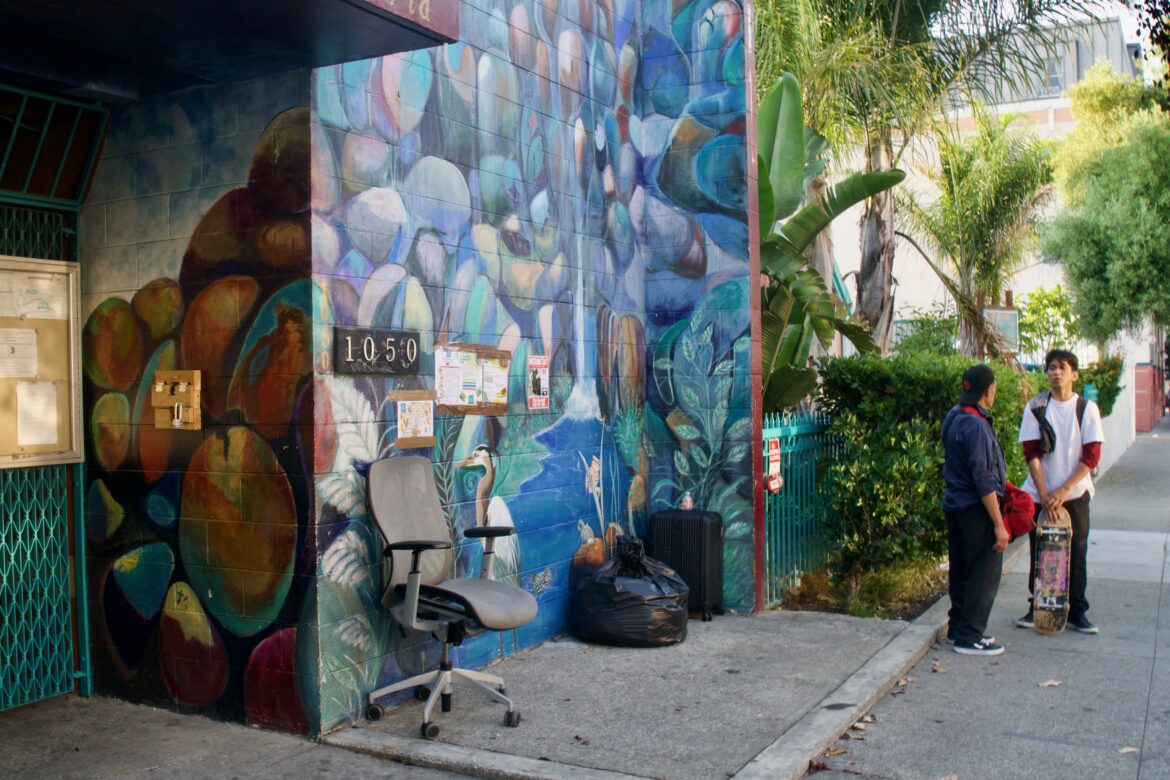If you are experiencing homelessness and seeking shelter in San Francisco, navigating the city’s system and finding a bed can be difficult. Pathways vary based on age, gender and family status, and within those categories, individual shelters have different intake processes.
Most San Francisco shelters require referrals or reservations, though a few take walk-ins. Some beds are available through the city’s coordinated entry system, while others can be accessed by contacting the organization that runs the shelter program. See our resource guide below for details.
Jennifer Friedenbach, executive director of the Coalition on Homelessness, said the best shelter systems help people get into a shelter easily and quickly transition them into other kinds of housing, freeing up the shelter bed for the next person.
You can also call the Homeless Outreach Team voicemail to request shelter, but securing placement through this channel can be difficult if you do not have reliable access to a phone. City employees working with the Homeless Outreach Team, Healthy Streets Operations Center and other groups may also offer you shelter if they encounter you in the community during their day-to-day operations.
“The cities that have the most success around homelessness have really good system flow and do the heavy investment in prevention so you’re stopping the inflow into homelessness,” Friedenbach said.
San Francisco is in the midst of a lawsuit brought by the Coalition on Homelessness and people experiencing homelessness. The suit centers on whether the city can enforce ordinances that prevent unhoused people from sitting, lying down or sleeping on public property, and whether the city can clear sidewalk encampments and displace people who live in them.
San Francisco does not have enough shelter beds for its unhoused population, and advocates say that clearing or sweeping encampments without ensuring access to viable housing options constitutes cruel and unusual punishment under the Eighth Amendment. The city says that it is offering shelter, but that people are refusing what is offered.
In December 2022, U.S. Magistrate Judge Donna Ryu issued a preliminary injunction that bans the city from conducting sweeps until a full trial takes place. On July 5, the Department of Homelessness and Supportive Housing launched an online shelter waitlist for adults to sign up for a bed in one of three congregate shelters — a similar system to the one that existed before the COVID-19 pandemic.
To understand how to secure a shelter spot in San Francisco, check out our resource guide and the details that follow it, including an interactive map. Download a print-friendly version of the guide here.
Accessing Shelter Graphic by Madison Alvarado/San Francisco Public PressThis guide does not include every possible shelter option in San Francisco. It refers to resources listed on the Department of Homelessness and Supportive Housing’s website for accessing temporary shelter. We verified hours of operation and other details by confirming them with city employees and the nonprofits with which it contracts to provide services.
What is Coordinated Entry?
Coordinated entry is a system designed to connect individuals experiencing or facing possible homelessness with resources such as housing referrals. If you follow this route, you will first participate in a discussion with city or nonprofit staff to determine if your housing challenge can be resolved without ongoing support or shelter provided by the city. This might include giving you financial assistance for moving expenses, helping you locate a place to rent or providing conflict resolution to help you stay in your existing housing.
If small-scale solutions are not viable, you will be asked a series of questions to determine what kinds of housing you may be eligible for. If you are found to be eligible for a housing referral, you will be assigned a navigator who will help you. If you are not found eligible, you may be directed toward resources outside of the city’s homelessness response system.
The coordinated entry system uses different pathways, called access points, for adults, families with children, and transitional-aged youth — a category that includes people aged 18 to 24, those under 18 who are legally emancipated, and those up to 27 who entered into the coordinated entry system before they turned 25. People who are pregnant can be served by access points for adults, families, or transitional-aged youth if they are in the applicable age range.
How Long Are Shelter Stays?
Shelters are designed for temporary accommodation, whereas permanent supportive housing is designed for long-term use. The length of shelter stays varies by program. Shelter stays for adults who use the online waitlist do not have time limits.
What If I Am Fleeing Domestic Violence?
San Francisco offers separate shelters and resources for families fleeing domestic violence.
What Should I Do While I’m on a Shelter Waitlist?
If you are waiting for shelter placement, you should call the Homeless Outreach Hotline at 628–652-8000 to request connection to resources and visit a coordinated entry access point to begin the housing assessment and placing process, Denny Machuca-Grebe, a public information officer with the Department of Homelessness and Supportive Housing, wrote in an email. He also recommended Dolores Street Community Services for adult walk-ups and the Taimon Booton Navigation Center for people who are transgender, gender non-conforming or intersex.
Updated, Sept. 13: The resource guide and map have been changed to include information about an additional coordinated entry access point for transitional-aged youth run by the LYRIC Center for LGBTQQ+ Youth.

